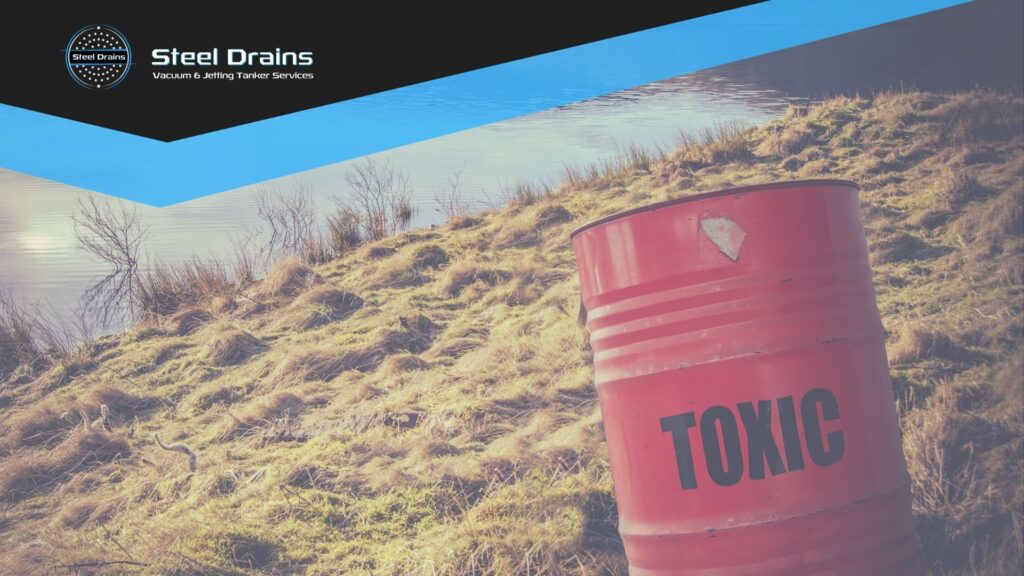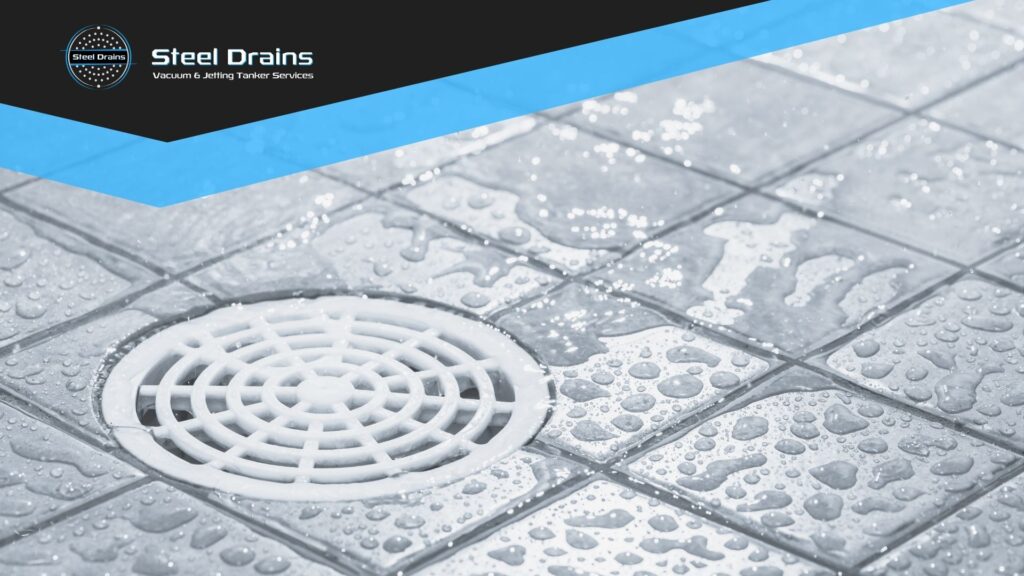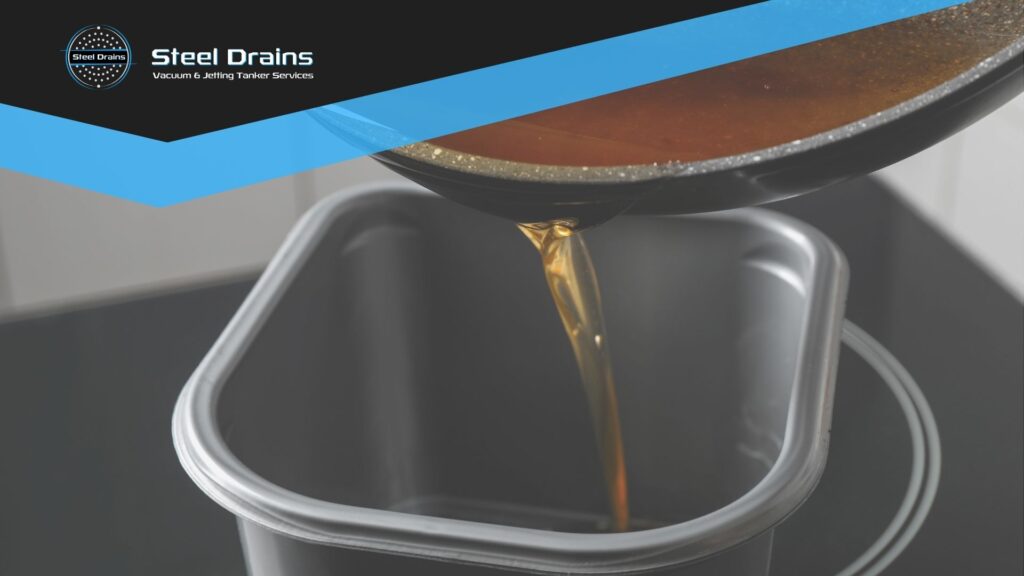Liquid waste management is crucial for environmental protection and compliance for businesses operating in the UK. With growing scrutiny on waste disposal practices, it is essential for companies to understand the differences between hazardous and non-hazardous liquid waste. This guide aims to define both types of waste, outline relevant regulations, and provide actionable insights for effective liquid waste management tailored specifically for UK businesses.
Introduction
In the UK, liquid waste is generated across various industries, including manufacturing, healthcare, and hospitality. Understanding the difference between hazardous and non-hazardous liquid waste is vital for compliance with waste disposal regulations and for minimising environmental impact. Hazardous liquid waste contains substances that can pose significant risks to human health and the environment. In contrast, non-hazardous liquid waste requires careful management but does not carry the same level of risk.
This blog will explore the definitions, regulations, and best practices concerning both hazardous and non-hazardous liquid waste. By the end, readers will gain a comprehensive understanding of their legal responsibilities and how to implement effective liquid waste management strategies.
Defining Hazardous Liquid Waste in the UK Context

What is Hazardous Liquid Waste?
Hazardous liquid waste refers to any liquid waste containing harmful substances classified as hazardous under UK law. This classification is primarily governed by the Hazardous Waste (England and Wales) Regulations 2005, which outline criteria for determining whether a waste is hazardous. The regulations define hazardous waste based on its chemical properties, toxicity, and potential harm to human health or the environment.
UK-Specific Regulations
In addition to the Hazardous Waste Regulations, the Environmental Protection Act 1990 provides a broader framework for waste management. This legislation places a duty of care on businesses to ensure that their waste is managed safely and legally. Businesses must also register as hazardous waste producers if they generate hazardous waste, ensuring proper tracking and disposal according to regulations.
Common Examples of Hazardous Liquid Waste
Several industries generate hazardous liquid waste. Examples include:
- Manufacturing: Waste oils, solvents, and chemical process residues.
- Healthcare: Infectious waste, including blood and bodily fluids.
- Automotive: Used motor oils and coolants.
- Cosmetics: Wastes from chemical formulations that contain toxic ingredients.
Understanding these wastes is crucial for businesses to implement appropriate disposal methods and protect the environment.
Understanding Non-Hazardous Liquid Waste

What is Non-Hazardous Liquid Waste?
Non-hazardous liquid waste refers to any liquid waste that does not possess the harmful characteristics that define hazardous waste. While this type of waste still requires proper management and disposal, it is considered less risky to human health and the environment.
Examples of Non-Hazardous Liquid Waste
Common sources of non-hazardous liquid waste include:
- Food and Beverage Industry: Wastewater from food processing and beverage production.
- Domestic Waste: Greywater from sinks and showers.
- Agricultural Waste: Liquid fertilisers and pesticide residues that are not classified as hazardous.
These examples show that while non-hazardous liquid waste is less harmful, it still poses challenges for effective management.
Regulations Surrounding Non-Hazardous Waste Management in the UK
The management of non-hazardous liquid waste is primarily governed by the Environmental Protection Act 1990 and the Waste (England and Wales) Regulations 2011. These regulations require businesses to manage their waste responsibly, ensuring that non-hazardous liquid waste is treated and disposed of in a manner that minimises its environmental impact.
Legal Responsibilities and Waste Management Regulations in the UK
Legal Obligations for Businesses
Businesses in the UK have a legal duty to manage their waste responsibly. Under the Environmental Protection Act, businesses must:
- Register as a waste producer if they generate hazardous waste.
- Ensure proper disposal of all liquid waste, whether hazardous or non-hazardous, by using licensed waste carriers and disposal sites.
- Keep accurate records of waste produced and how it is treated or disposed of.
Relevant Legislation
Key legislation governing liquid waste management includes:
- Environmental Protection Act 1990: Provides the framework for waste management and establishes the duty of care for businesses.
- Hazardous Waste (England and Wales) Regulations 2005: Specifies the classification and disposal requirements for hazardous waste.
- Waste (England and Wales) Regulations 2011: Outlines the responsibilities of businesses in managing non-hazardous waste.
Compliance Insights
To ensure compliance with these regulations, businesses should:
- Conduct Waste Audits: Regularly assess the types and volumes of liquid waste generated.
- Implement Training Programs: Train employees on waste management practices and legal obligations.
- Develop Waste Management Plans: Create structured plans detailing how to manage hazardous and non-hazardous waste effectively.
Best Practices for Managing Liquid Waste

Practical Tips for Businesses
Effective liquid waste management requires adherence to best practices, including:
- Proper Storage: Store hazardous liquids in secure, labelled containers to prevent leaks and spills.
- Regular Inspections: Conduct routine checks on storage facilities to ensure compliance with safety standards.
- Use of Licensed Waste Carriers: Always engage licensed carriers for transporting hazardous waste to ensure safe and compliant disposal.
Importance of Proper Disposal and Recycling Practices
Proper disposal and recycling practices are critical to minimising the environmental impact of liquid waste. Businesses should consider:
- Recycling Opportunities: Explore options for recycling liquid waste, such as reclaiming solvents in industrial processes.
- Treatment Solutions: Invest in onsite treatment technologies for non-hazardous liquid waste to reduce disposal costs.
Successful Waste Management Initiatives in the UK
Several UK businesses have successfully implemented effective liquid waste management initiatives. For example, a large brewery in the UK has developed a system for treating wastewater onsite, significantly reducing their reliance on external disposal services and minimising their environmental footprint.
Actionable Tips for Effective Liquid Waste Management
Here are some actionable strategies for UK businesses to manage their liquid waste effectively:
- Assess Waste Types:
- Conduct a thorough analysis of all liquid waste produced.
- Identify hazardous vs. non-hazardous types to determine appropriate management strategies.
- Educate Employees:
- Provide training sessions on waste classification and management practices.
- Ensure staff understand the importance of compliance with waste disposal regulations.
- Develop a Waste Management Policy:
- Create a clear policy outlining procedures for managing liquid waste.
- Include guidelines for storage, treatment, and disposal.
- Monitor Waste Generation:
- Keep records of waste produced and monitor trends over time.
- Use data to identify areas for improvement.
- Engage with Waste Management Experts:
- Consult with environmental professionals or waste management companies for tailored advice.
- Stay updated on regulations to ensure continued compliance.
Conclusion
Understanding the differences between hazardous and non-hazardous liquid waste is essential for UK businesses to ensure compliance with regulations and protect the environment. By implementing effective waste management practices, businesses can minimise their environmental impact and contribute to a sustainable future.
As a proactive measure, businesses should review their waste management practices and seek guidance if necessary. Ensuring proper classification and disposal of liquid waste not only safeguards the environment but also enhances a company’s reputation and operational efficiency. Start assessing your liquid waste today to ensure compliance and environmental responsibility.